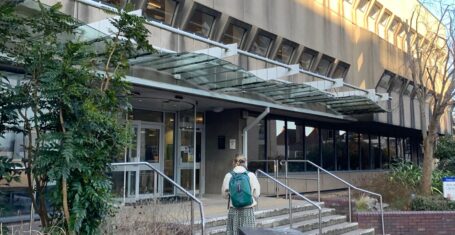
Scotland’s universities face financial turmoil: Job cuts, deficits, and an uncertain future
As international student recruitment slows, institutions face the challenge of managing debt and costly expansion projects.
Scottish universities are facing a financial crisis of unprecedented scale, with job losses and spending cuts mirroring the impact of major industrial closures. Universities across the country are grappling with significant deficits, raising concerns about their long-term viability.
A sector in crisis
Dundee University has announced plans to cut 632 full-time jobs—equivalent to a fifth of its workforce—as it struggles to address a £35 million deficit. The University of Edinburgh, one of Scotland’s most prestigious institutions, is seeking to make £140 million in cuts over the next 18 months, a sum representing approximately 10 per cent of its annual expenditure.
Aberdeen University has also implemented staff reductions through voluntary redundancies, while Robert Gordon University has placed 135 positions “at risk.” According to its 2024 Annual Report, the University of Aberdeen recorded an operating deficit of £6.3 million and saw cash reserves fall by over £23 million. Staff costs also increased to over 60 per cent of income—significantly above target.
When contacted for comment, Aberdeen University directed The Glasgow Tab to its annual report.
The financial strain is not limited to Scotland, with more than 80 universities across the UK facing deficits ranging between £10 million and £50 million. Institutions such as Durham and Cardiff are already planning significant cost-cutting measures.

Cardiff University
With the Scottish Funding Council’s delayed annual financial assessment expected to reveal that over half of Scotland’s universities are running deficits, the sector is at a breaking point. While all institutions are facing financial pressures, some have been more successful than others in anticipating and mitigating the risks.
The funding dilemma
Most Read
One of the primary challenges facing Scottish universities is the level of student funding. The Scottish government provides “free tuition” for Scottish-domiciled students, with costs covered through the Scottish Funding Council (SFC). However, university representatives argue that this funding has not kept pace with inflation or increasing student numbers.
According to Universities Scotland, funding per student has decreased by 39 per cent in real terms over the past decade. Research funding has also suffered a 43 per cent decline since 2014/15. While the Scottish government highlights its £1.1 billion investment in the sector, critics argue that the per-student fee of £1,810 has remained unchanged for 15 years, creating unsustainable financial conditions for universities.
A study by the Institute for Fiscal Studies (IFS) revealed that spending per student in Scotland has dropped by 22 per cent since 2013, with half of that reduction occurring in the past three years amid soaring costs. While Scottish universities posted a 5.2 per cent surplus in 2022/23, the IFS warns that financial conditions are rapidly deteriorating.
The overseas student conundrum
In recent years, UK universities have aggressively recruited international students, charging significantly higher tuition fees—ranging from £10,000 to £40,000 per year. The number of foreign students in the UK has surged, rising from 5 per cent in the 1990s to over 25 per cent today. At Scotland’s older universities, this figure is closer to 40 per cent.
However, this model has its risks. The number of students from the European Union halved post-Brexit, and although institutions pivoted to markets such as China and Nigeria, geopolitical and economic shifts have made these revenue streams less reliable. A sharp depreciation of Nigeria’s currency, for example, has significantly impacted the number of students able to afford UK tuition fees.
The UK government’s tightening of visa regulations, including restrictions on student dependents and increased NHS fees, has further dampened demand from key international markets. Meanwhile, competition for international students has intensified, with countries such as Ireland, Germany, and Singapore now emerging as attractive alternatives to the UK.
Rising costs and unsustainable expansion
As universities increased their intake of international students, they also ramped up spending on new facilities, staff, and infrastructure. The University of Edinburgh, for instance, has seen student numbers grow from 35,000 to nearly 50,000 in the past decade, with income rising from £819 million to £1.43 billion. However, as international student recruitment slows, institutions face the challenge of managing debt and costly expansion projects.
Robert Gordon University: Voluntary schemes and student reassurance
In a statement, Professor Steve Olivier, Principal and Vice-Chancellor of Robert Gordon University, said: “The University has, at every opportunity, done all that it can to mitigate against the potential of compulsory redundancies.
“This includes the option of staff leaving voluntarily on enhanced terms and, through our redeployment process, having the opportunity of applying for an alternative role within the University.
“We are disappointed that EIS members have decided to vote for strike action and will continue to engage constructively with their representatives during what is an extremely challenging time for the sector.”
RGU began its Finance Transformation Project in November 2023, backed by the Board, and has since implemented two voluntary severance schemes and offered enhanced voluntary redundancy packages. These efforts are expected to limit the number of compulsory redundancies to a maximum of 60. Additionally, the university has identified over 60 vacant roles that will soon be made available for redeployment, which may reduce the number of compulsory redundancies further.
From a student perspective, RGU has affirmed its commitment to minimising disruption. The university stated that there are no plans to cancel current courses, and that the impact of any strike action is expected to be minimal. Clear communication with students around any proposed strike dates has also been promised.
The road ahead
The financial crisis is prompting a sector-wide reassessment of priorities. Dundee University is undergoing an external inquiry expected to highlight management failures and recruitment issues. Course offerings are likely to shrink, with subjects that generate lower income—such as languages—being particularly vulnerable.

Dundee University via Ydam on Creative Commons
Students across Scotland are beginning to raise concerns over transparency, mental health provision, and the possible erosion of academic quality. Student associations at several universities have called for guarantees on continuity of teaching and support during institutional restructuring.
The Scottish Funding Council and the Scottish government face pressure to intervene, but their options are limited given universities’ autonomy and existing financial constraints. Some experts argue that mergers between institutions or shared services could reduce costs, while others advocate for a fundamental rethink of the funding model.
Politically, the sector is waiting to see if Education Secretary Jenny Gilruth or the Scottish Government will act to review the tuition fee model, which has remained static since 2009. Critics argue that unless core funding is revisited, universities will remain dependent on international recruitment, which is increasingly volatile.
A leading university principal recently remarked that Scotland must move beyond the simplistic “fee or free” debate and rethink higher education funding for the next two to three decades. With Scotland’s universities long recognised for their world-class research and education, their ability to adapt to this crisis will have profound implications for the country’s economy and global standing.
Without urgent financial reforms, sustainable funding models, and increased transparency with both staff and students, Scotland’s universities risk long-term damage—not only to their reputations, but to their core mission of education and innovation.
One thing is clear: Without urgent reforms and financial stabilisation, the future of Scotland’s universities hangs in the balance.
University of Edinburgh and the University of Dundee were all contacted for comment but have not yet responded.
Featured image via Unsplash and Nick Bramhall on Creative Commons






















